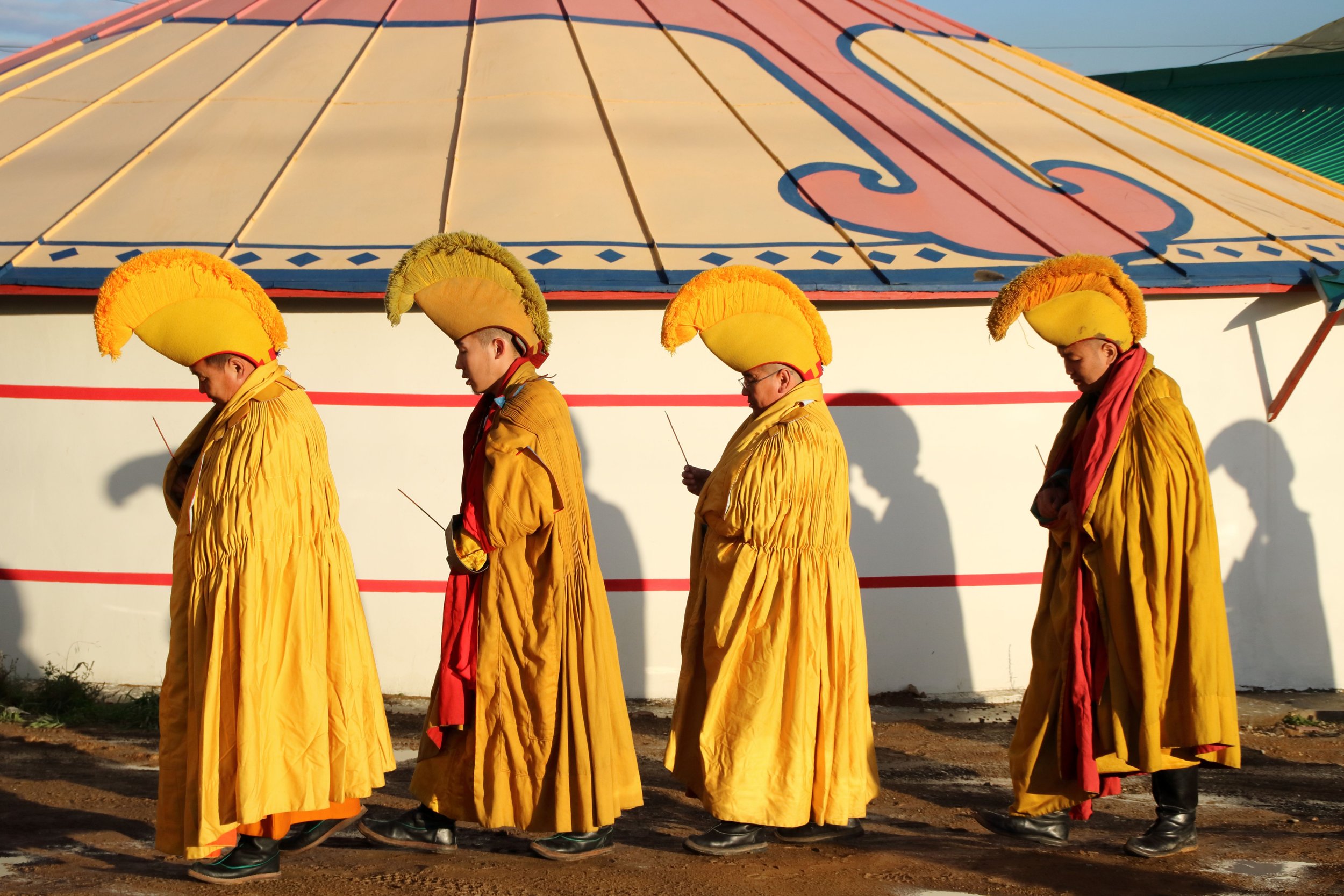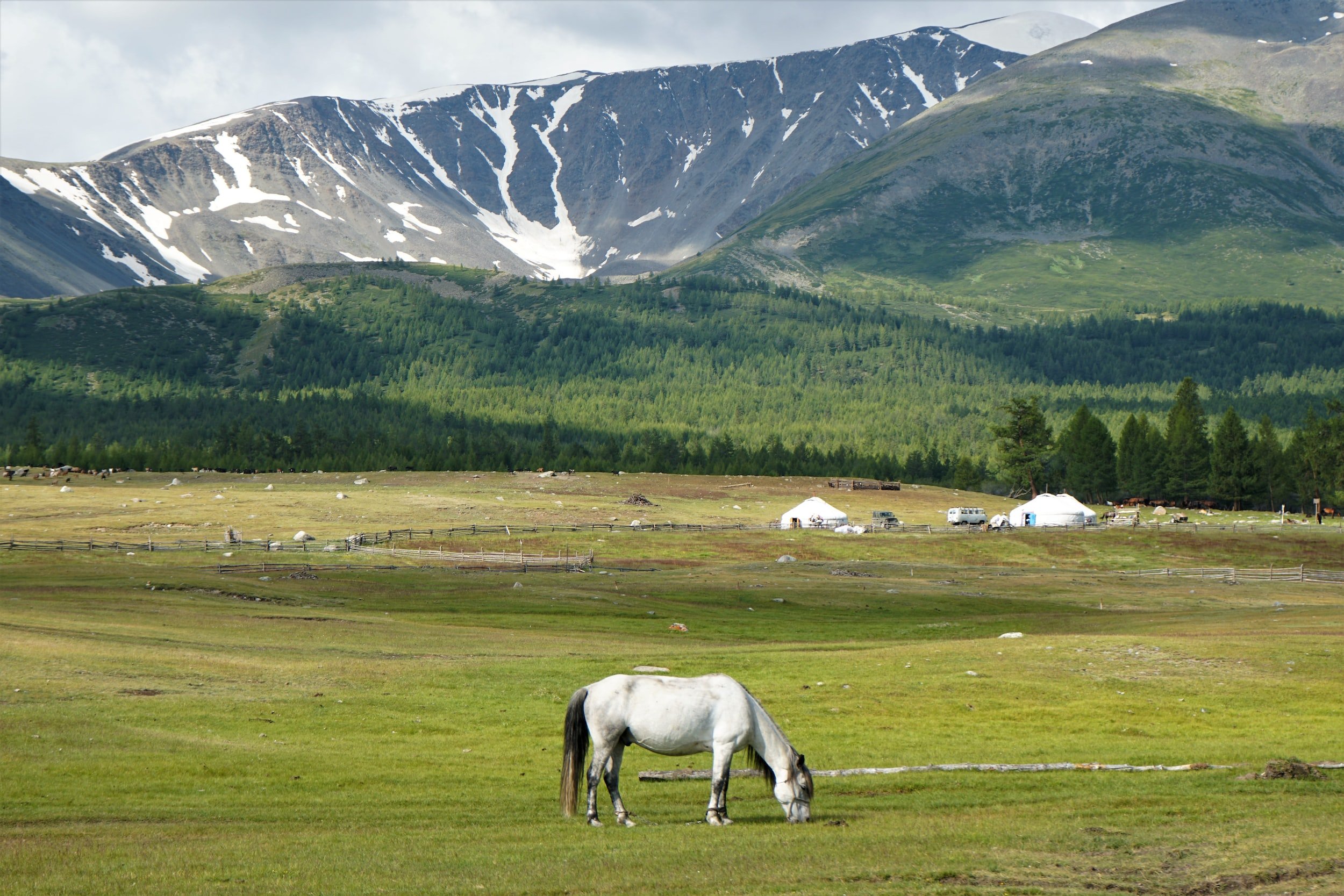
Equals in the World
The Wildlife of Mongolia
This program is a unique amalgamation, combining elements from all of our programs to deliver a formative experience for your students. Starting in the capital Ulaanbaatar, students will be immersed into a nomadic life, learn about the attempts to repopulate wild horses on the steppe, understand Buddhism, and explore a national park with wild animals, including Wolves and Lynxes.
Sample Itinerary
Day 1
Arrive at the Ulaanbaatar International Airport, and meet your program leader who will take you to your hotel. The centrally located hotel is within walking distance to museums, shops, and malls.
Enjoy a traditional Mongolian welcome dinner.
Day 2
Head to Mongol Nomadic Theme camp (55km northeast of Ulaanbaatar) and explore its picturesque scenery of rolling hills, and impressive and evocative vast land. Arrive and settle in Ger camp in Mongol Nomadic, a camp with a stunning view of the valley. Experience what it is like to live in a nomadic ger, an architectural marvel as old as the history of steppe Mongols. Spend two nights.
In the afternoon, will include theory lessons with a teacher to transfer knowledge regarding the specifics of the given day’s agenda and details of the chosen location. The agenda is primarily comprised of Mongolian history, nomadic culture, local cuisine, Buddhism and shamanism, local animals, fauna, and flora. After a long active day, enjoy international and Mongolian cuisine at the resort.
Day 3
In the morning, learning sessions of Mongolian nomadic culture including Mongolian art, traditional dance, throat singing, and horse-headed fiddle instruments by local artists.
Throat singing is a unique style of singing where a single vocalist produces multiple distinct pitches or overtones simultaneously, creating a mesmerizing and otherworldly sound.
The Mongolian horse-headed fiddle, known as the "morin khuur" in Mongolian, is a traditional stringed musical instrument that holds a significant place in Mongolian culture and music. The name "morin khuur" translates to "fiddle with a horse's head" in reference to the distinctive carved horse's head at the top of the instrument's neck. Take part in a diverse array of workshops that cater to your specific interests, encompassing unique disciplines such as the ancient art of throat singing, the mastery of musical instruments, the graceful intricacies of traditional dance, and the expressive world of fine arts.
Day 4
Drive to Hustai National Park.
HNP is extraordinary because of its natural diversity. From forest steppe, grassland steppe, and sand dunes to its rich biodiversity and cultural monuments. The reintroduction of the takhi wild horse.
Explore key features and information about Hustai National Park including:
Flora and Fauna: Hustai National Park is characterized by a mix of rolling hills, rocky outcrops, lush valleys, and meandering streams. The park's vegetation includes various species of grasses, shrubs, and forested areas. It is also home to a wide variety of wildlife, including red deer, marmots, ibex, wolves, and over 200 species of birds.
Przewalski's Horse: The park is particularly renowned for its role in the conservation of Przewalski's horse, also known as the Takhi in Mongolian. These horses are considered the only truly wild horses in the world. Extinct in the wild by the mid-20th century, a successful breeding program at Hustai National Park has led to the reintroduction of these horses into their native habitat. Visitors have the opportunity to see these magnificent creatures in a semi-wild state.
Day 5
Meeting with the biologist at the research center who specializes in the Takhi wild horse or the local wildlife in the area. They share their background, experience, and the focus of their research, which could involve genetics, behavior, habitat, or conservation efforts.
Field Observation: Depending on the time of year and research schedules, you might have the chance to observe the Takhi horses in their natural habitat. You'd be guided by the biologist and provided with insights into their daily lives and how the research center monitors and protects the herd.
Q&A and Discussion: A session for questions and discussion would follow the field observation. You could ask the biologist and research center staff about their work, the challenges they encounter, and the broader context of wildlife conservation in Mongolia.
Hands-on Experience: If allowed, you might participate in some of the research activities, such as data collection, camera trap setup, or habitat restoration efforts.
Day 6
Historical and archeological glimpse of Mongolia.
The Ungut monument is the largest recorded monument of its kind in Mongolia and Central Asia. It consists of a collection of 30 stones, and it is historically associated with the Turkic Empire, which ruled Mongolia in the 6th and 7th centuries.
Hiking in the area: learning more apart from takhi, the park is home to a variety of other mammals, including red deer, Mongolian gazelles, roe deer, boars, marmots, and various small mammals. The park provides an essential habitat for these species. The park also hosts diverse bird species, with over 220 different avian species recorded within its boundaries. Notable bird species found in the park include the Saker falcon, cinereous vulture, Daurian partridge, and several waterfowl species. Flora: The park's landscape is characterized by a mix of steppe and forest ecosystems. You can find a variety of plant species, including wildflowers, grasses, and shrubs.
Day 8
We conclude our adventure through Mongolia. Transfer back to Ulaanbaatar via flight to journey home.
Day 7
Drive back to Ulaanbaatar. On arrival, we will have lunch at the hotel.
The rest of the day will be on your own, except the lunch and farewell dinner.
We will assist/consult you to select the right services from a local perspective.
Canvas and Perception: Before our farewell dinner, let's come together for a magical Art Hour. Unleash your creativity as you draw your inspiration onto the canvas. It's a special moment to express yourself and capture memories in a unique way. Join us for this artistic gathering, adding your personal touch to the farewell festivities. Let the canvas become a testament to the shared moments and creativity of our time together. A farewell dinner at the hotel with all trip members to celebrate the achievements and learnings from the trip, along with special prizes to the achievers and winners of separate activities.






Ask us about school trips
info@beyondclassrooms.org
Hong Kong | California | Shanghai
Beijing | Taipei | Ulaanbaatar | Seoul

